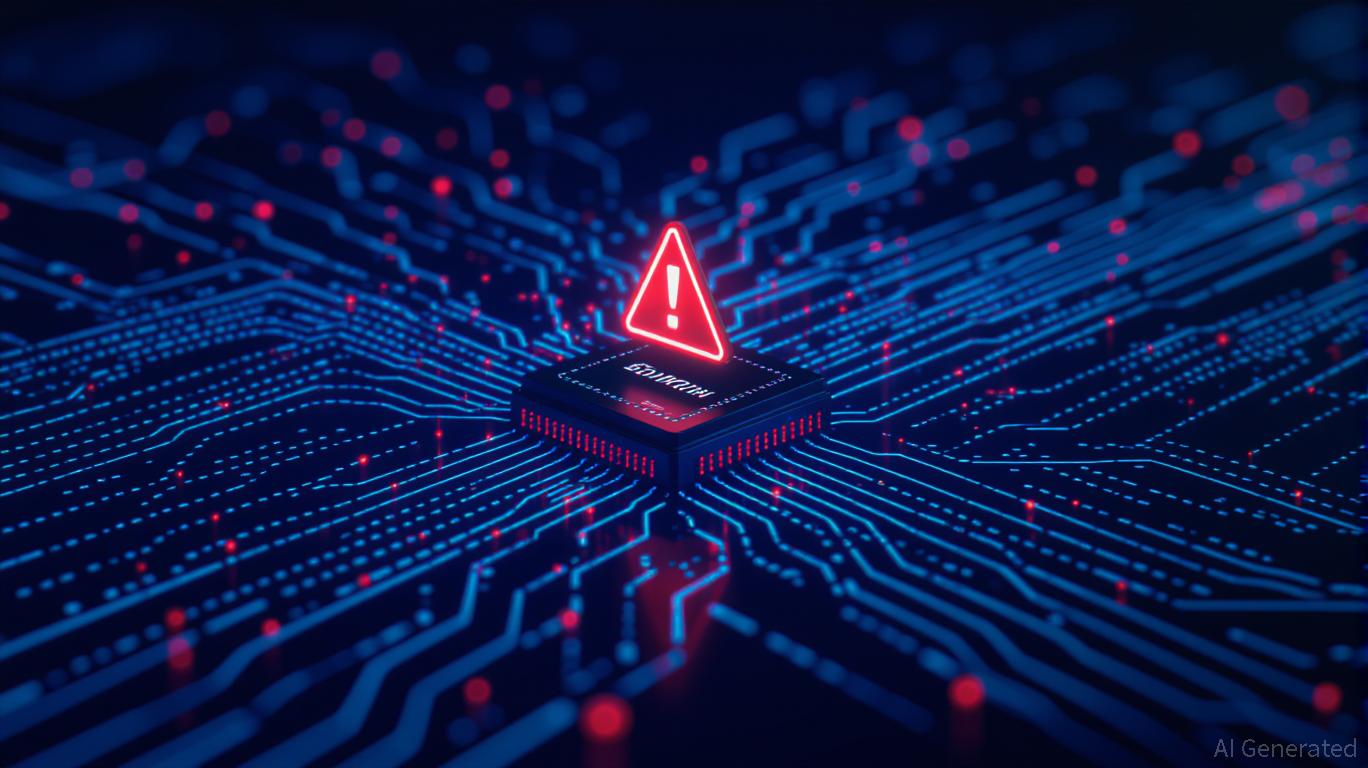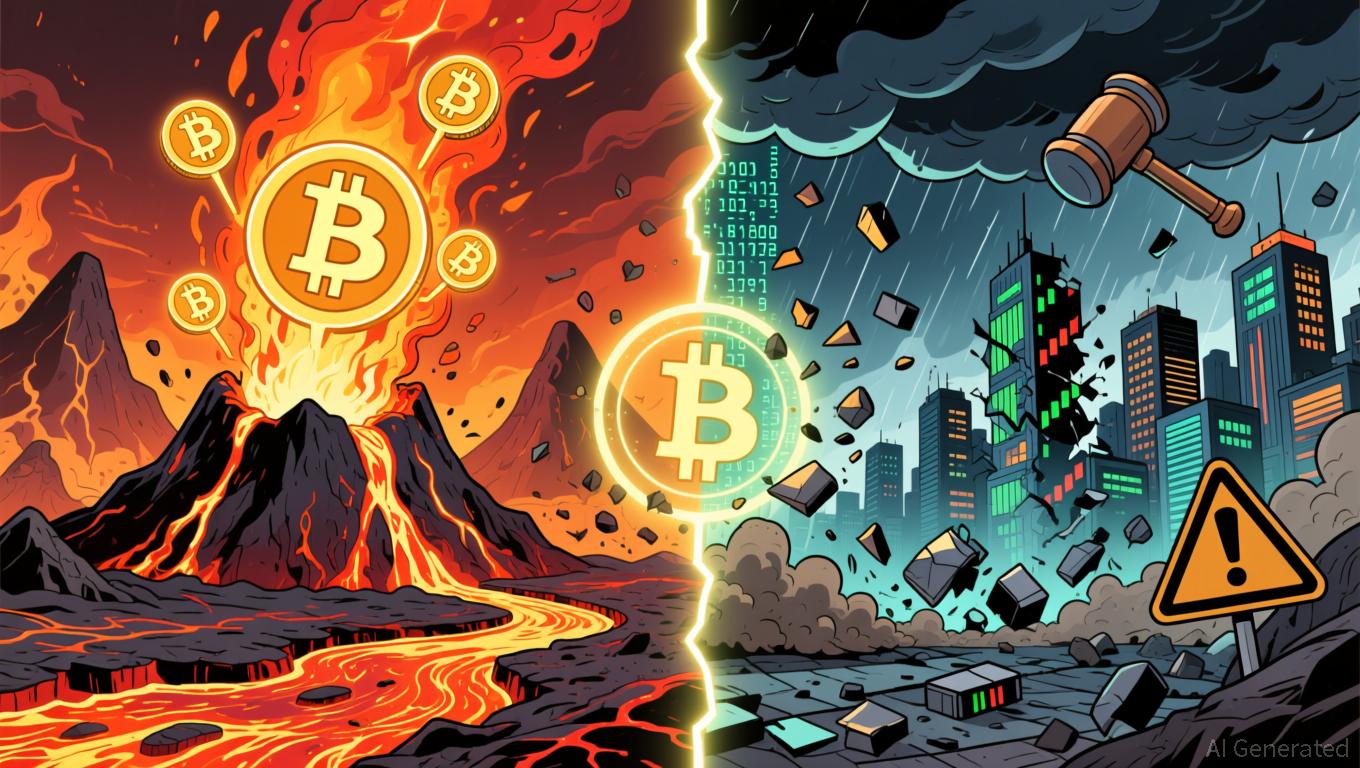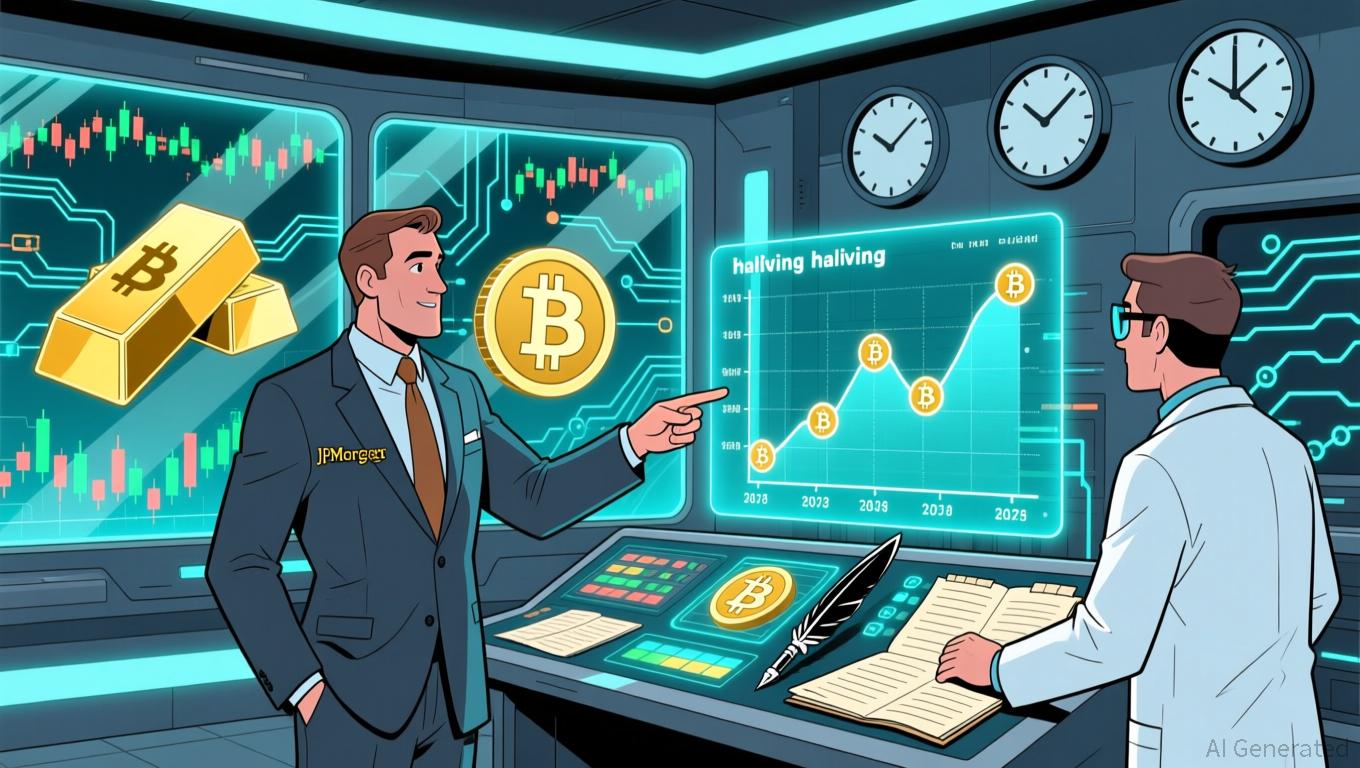Solana's Latest Fluctuations and Systemic Threats in Smart Contract Platforms: An Analysis of DeFi Stability and Weaknesses Following Recent Outages
- Solana's high-throughput blockchain faces systemic risks after a 2024 outage exposed fragility in its single-layer execution model and validator network. - A 64% decline in validators (from 2,500 to 900) raises centralization concerns, though quality improvements and Alpenglow upgrades aim to reduce operational costs. - Price volatility ($100-$1,000 in 2024-2025) reflects conflicting market signals: strong DEX volume vs. technical selling pressure and low investor confidence in upgrades. - Fee inefficien
The February 2024 Outage: Prompting a Rethink
On February 6, 2024, Solana’s network was down for five hours due to a bug in the Agave client’s Just-in-Time compiler. This disruption, which happened during a period of unprecedented activity (with 70 million daily transactions and $143 billion in DEX volume as of October 2025), highlighted the weaknesses of Solana’s single-layer execution approach. While advocates praise Solana’s speed and performance, the outage revealed shortcomings in both client diversity and consensus protocols.

Validator Network Shrinkage: Centralization or Streamlining?
Another pressing issue is the significant drop in Solana’s validator numbers. From a high of 2,500 in early 2023, the count has fallen to below 900 by 2025—a decrease of 64%. Detractors see this as a sign of growing centralization, while supporters argue that the validators who remain are more reliable, with many removed for malicious actions like facilitating sandwich attacks. The Solana Foundation’s move to cut validator subsidies further signals a focus on sustainability over sheer numbers.
This reduction, though, brings up concerns about whether the network can stay decentralized while attracting new validators. The upcoming Alpenglow upgrade, designed to lower validator costs by simplifying consensus, could help by making participation easier. Still, until these improvements are fully in place, the network’s dependence on a smaller, more concentrated validator group could pose risks.
DeFi’s Dilemma: High Throughput Versus Fee Structure
Solana’s single-layer design has allowed it to surpass Ethereum in DEX activity and on-chain earnings. Yet, this same setup has revealed flaws in its priority fee system. During the 2024
Still, these issues point to a larger challenge for DeFi: high throughput alone is not enough if users face unpredictable costs and poor experiences. For Solana to maintain its lead in DeFi, it must ensure its fee model meets the needs of both individual and institutional users.
Price Swings and Market Mood: A Constant Struggle
Solana’s price
Investor sentiment remains wary, as
Looking Forward: Upgrades Amid Uncertainty
Solana’s future plans feature two major upgrades: Firedancer and Alpenglow.
Nevertheless, skepticism in the market remains. While technical upgrades are crucial, they alone may not be enough to rebuild trust. Solana must also prove that its validator network and fee structures can evolve to meet the needs of a growing DeFi sector.
Conclusion: A Test of Endurance
Solana’s recent instability and systemic challenges illustrate the hurdles high-throughput blockchains face. The February 2024 outage and shrinking validator pool have exposed weaknesses that could threaten the network’s DeFi goals if left unaddressed. However, the community’s response—including QoS metrics, Firedancer, and Alpenglow—shows a strong drive for progress.
For those investing in Solana, the central question is whether these upgrades will be sufficient to bring stability to both its price and infrastructure. The outcome will hinge not just on technical achievements, but also on the network’s ability to balance speed, decentralization, and user satisfaction. In the wider DeFi world, Solana’s experience is a clear reminder: scalability is just the beginning, not the solution.
Disclaimer: The content of this article solely reflects the author's opinion and does not represent the platform in any capacity. This article is not intended to serve as a reference for making investment decisions.
You may also like
XRP News Update: XRP ETFs See Inflows Soar While Prices Drop: The $628 Million Inflow Mystery
- XRP ETF inflows hit $164M daily as Bitwise, Grayscale, and Franklin Templeton drive institutional adoption, surpassing $628M total assets. - Ripple's 2025 SEC settlement and RLUSD stablecoin boosted confidence, but XRP's price fell below $2 amid whale sales of 200M tokens. - CME's XRP futures and NYSE Arca's ETF approvals signal growing institutional infrastructure, though 41.5% of XRP supply remains in loss positions. - XRP outperformed Bitcoin (+89% vs 3.6%) due to DeFi upgrades and cross-border utilit
India’s legal framework poses significant obstacles to the enforcement of U.S. court judgments.
- U.S. courts face enforcement challenges in India as Byju Raveendran's $1.07B default judgment clashes with India's strict foreign judgment recognition rules under Section 13. - TCS must appeal a $194M trade secrets ruling from the U.S. Fifth Circuit, highlighting cross-border IP disputes' complexity in the global IT sector . - Binance refunds Alpha Points after a technical error in a token airdrop, emphasizing operational risks in blockchain-based reward systems. - Amber International reports 69.8% YoY a

Bitcoin News Update: Bitcoin's Divergence from MAG7 Highlights a Shift Toward Scarcity-Focused Identity
- Bitcoin’s recent price drop and volatility warnings highlight market fragility amid diverging MAG7 correlations. - A historic $19B liquidation on October 10 marked Bitcoin’s decoupling from MAG7 tech stocks, reclassifying it as a scarcity-based hedge. - Low institutional adoption and 5% odds for MAG7 firms to hold Bitcoin in 2025 underscore limited macro support. - Trump’s growth forecasts lack Bitcoin tailwinds; CleanSpark’s AI pivot highlights crypto diversification. - Bitcoin’s future hinges on macroe

Bitcoin News Today: JPMorgan's Bold Bitcoin Gamble: Potential for 1.5x Profit or 40% Decline by 2028
- JPMorgan Chase launched a Bitcoin-linked structured note tied to BlackRock's IBIT ETF, offering 16% minimum returns by 2026 or 1.5x uncapped gains by 2028. - The product reflects institutional acceptance of Bitcoin as a tradable macro asset, aligning with ETF inflows despite recent market declines. - Investors face significant risks: potential 40% losses if Bitcoin collapses, though partial downside protection is offered for declines under 30% by 2028. - JPMorgan's approach mirrors Morgan Stanley's $104M
